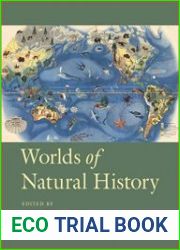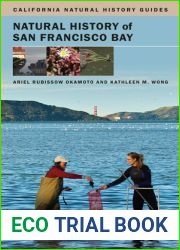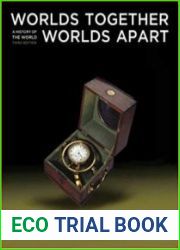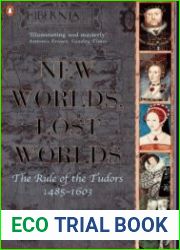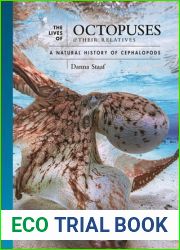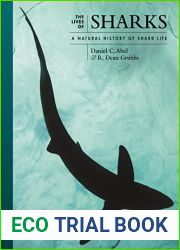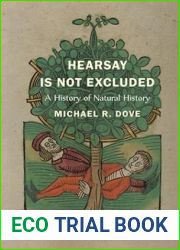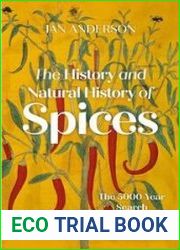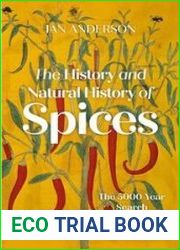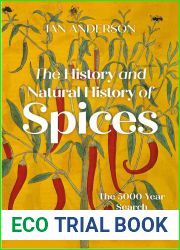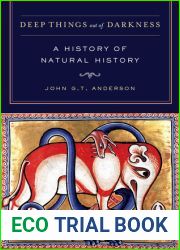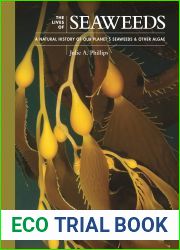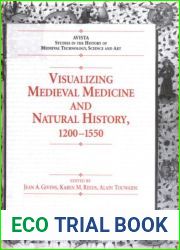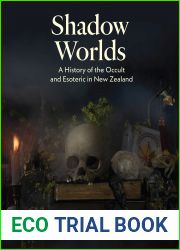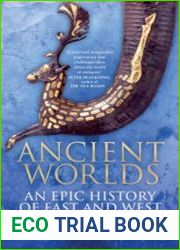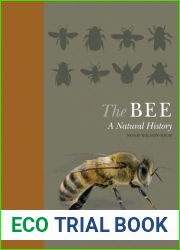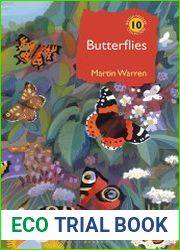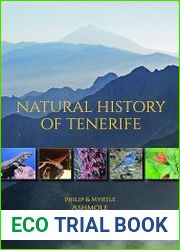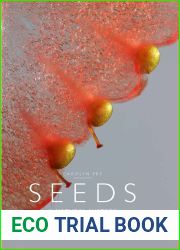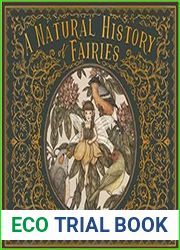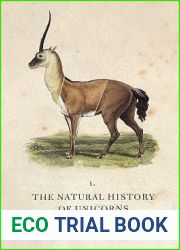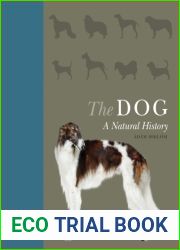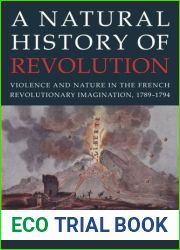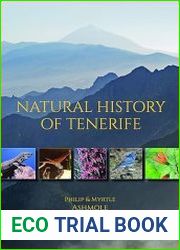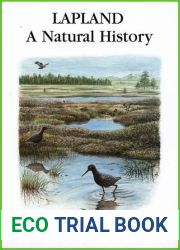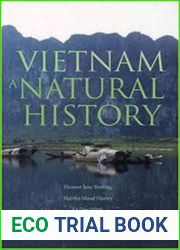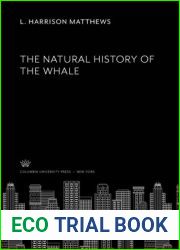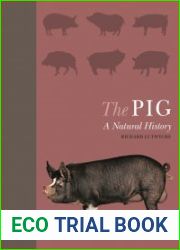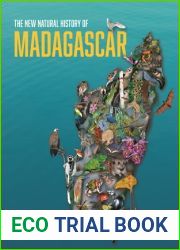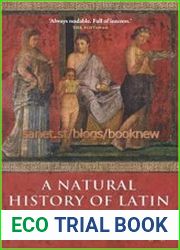
BOOKS - HISTORY - Worlds of Natural History

Worlds of Natural History
Author: Helen Anne Curry, Nicholas Jardine, James Andrew Secord
Year: 2019
Pages: 682
Format: EPUB
File size: 133,2 MB
Language: ENG

Year: 2019
Pages: 682
Format: EPUB
File size: 133,2 MB
Language: ENG

Exploring the links between scientific discovery cultural imagination and the representation of nature from the age of exploration to the era of environmentalism Worlds of Natural History provides an engaging account of how humans have sought to understand describe and represent the natural world over time. Book Worlds of Natural History: Exploring the Links Between Scientific Discovery, Cultural Imagination, and Representations of Nature The book "Worlds of Natural History" delves into the historical development of human understanding and representation of the natural world, spanning from the 16th century to the present day. The book explores how scientific discoveries, cultural imagination, and artistic expression have intertwined to shape our comprehension of the natural world. It covers various aspects of natural history, including the study of plants, animals, and landscapes, and how these have evolved over time. The text begins by examining the early days of natural history, where explorers and scientists embarked on expeditions to uncover new species and territories, often with limited understanding of the cultures they encountered. As European powers expanded their reach, the need for accurate descriptions and classifications of newly discovered flora and fauna grew. This led to the establishment of museums and botanical gardens, which served as repositories of knowledge and sparked the development of taxonomic systems still in use today. As the field of natural history progressed, so did the methods used to study and document it. Artists and illustrators played a crucial role in depicting the natural world, providing visual representations that helped to solidify the scientific discoveries of their contemporaries. The book highlights notable examples such as Mark Catesby's watercolor illustrations of North American plants and animals and John James Audubon's life-size bird prints, showcasing the importance of art in the scientific process. However, the pursuit of natural history was not without its challenges. The book delves into the ethical considerations of collecting and displaying specimens, particularly those from colonized regions, and how these practices have had lasting impacts on indigenous cultures and ecosystems. It also explores how cultural attitudes towards nature have shifted over time, from a focus on conquest and dominance to one of preservation and conservation. The text then turns to the 19th and 20th centuries, where advances in technology enabled new forms of exploration and discovery.
Изучение связей между научными открытиями культурного воображения и представлением природы от эпохи исследования до эпохи энвайронментализма Worlds of Natural History дает увлекательный отчет о том, как люди пытались понять, описывать и представлять природный мир с течением времени. Название книги: Worlds of Natural History: Exploring the Links Between Scientific Discovery, Cultural Imagination, and Representations of Nature Книга «Worlds of Natural History» углубляется в историческое развитие человеческого понимания и представления о мире природы, охватывающее период с XVI века до наших дней. Книга исследует, как научные открытия, культурное воображение и художественное выражение переплетаются, формируя наше понимание мира природы. Он охватывает различные аспекты естественной истории, включая изучение растений, животных и ландшафтов, и то, как они развивались с течением времени. Текст начинается с изучения первых дней естественной истории, когда исследователи и ученые отправились в экспедиции, чтобы обнаружить новые виды и территории, часто с ограниченным пониманием культур, с которыми они столкнулись. По мере того, как европейские державы расширяли свой охват, росла потребность в точных описаниях и классификациях вновь открытой флоры и фауны. Это привело к созданию музеев и ботанических садов, которые служили хранилищами знаний и вызвали развитие таксономических систем, используемых до сих пор. По мере развития области естественной истории прогрессировали и методы, используемые для ее изучения и документирования. Художники и иллюстраторы сыграли решающую роль в изображении мира природы, предоставив визуальные представления, которые помогли укрепить научные открытия их современников. В книге освещаются такие примечательные примеры, как акварельные иллюстрации североамериканских растений и животных Марка Кейтсби и отпечатки птиц Джона Джеймса Одюбона в натуральную величину, демонстрирующие важность искусства в научном процессе. Однако стремление к естественной истории не обошлось без своих вызовов. Книга углубляется в этические соображения сбора и демонстрации образцов, особенно из колонизированных регионов, и того, как эти практики оказали длительное воздействие на коренные культуры и экосистемы. В ней также исследуется, как культурное отношение к природе менялось с течением времени, от акцента на завоевании и доминировании до акцента на сохранении и сохранении. Затем текст обращается к XIX и XX векам, где развитие технологий позволило новые формы исследования и открытия.
Explorer les liens entre les découvertes scientifiques de l'imagination culturelle et la représentation de la nature, de l'ère de l'exploration à l'ère de l'environnementalisme Worlds of Natural History, donne un aperçu fascinant de la façon dont les gens ont essayé de comprendre, décrire et représenter le monde naturel au fil du temps. Titre du livre : Worlds of Natural History : Exploring the Links Between Scientific Discovery, Cultural Imagination, and Representations of Nature livre Worlds of Natural History explore le développement historique de la compréhension et de la vision de l'homme sur le monde de la nature période allant du XVIe siècle à nos jours. livre explore comment les découvertes scientifiques, l'imagination culturelle et l'expression artistique s'entrelacent, façonnant notre compréhension du monde de la nature. Il couvre divers aspects de l'histoire naturelle, y compris l'étude des plantes, des animaux et des paysages, et la façon dont ils ont évolué au fil du temps. texte commence par l'étude des premiers jours de l'histoire naturelle, lorsque des chercheurs et des scientifiques sont partis en expédition pour découvrir de nouvelles espèces et de nouveaux territoires, souvent avec une compréhension limitée des cultures qu'ils ont rencontrées. Au fur et à mesure que les puissances européennes s'étendaient, le besoin de descriptions et de classifications précises de la flore et de la faune nouvellement découvertes augmentait. Cela a conduit à la création de musées et de jardins botaniques qui ont servi de dépôts de connaissances et ont provoqué le développement des systèmes taxonomiques utilisés jusqu'à présent. Au fur et à mesure que le domaine de l'histoire naturelle évoluait, les méthodes utilisées pour l'étudier et le documenter progressaient. s artistes et les illustrateurs ont joué un rôle crucial dans la représentation du monde de la nature en fournissant des représentations visuelles qui ont contribué à renforcer les découvertes scientifiques de leurs contemporains. livre met en lumière des exemples remarquables tels que les illustrations aquarelles des plantes et des animaux nord-américains de Mark Catesby et les empreintes d'oiseaux de taille naturelle de John James Odubon, démontrant l'importance de l'art dans le processus scientifique. Mais la quête de l'histoire naturelle n'a pas été sans défis. livre explore les considérations éthiques de la collecte et de la démonstration de spécimens, en particulier dans les régions colonisées, et la façon dont ces pratiques ont eu des effets durables sur les cultures et les écosystèmes autochtones. Il examine également comment les attitudes culturelles envers la nature ont évolué au fil du temps, passant de l'accent mis sur la conquête et la domination à l'accent mis sur la conservation et la conservation. texte s'adresse ensuite aux XIXe et XXe siècles, où le développement de la technologie a permis de nouvelles formes de recherche et de découverte.
estudio de los vínculos entre los descubrimientos científicos de la imaginación cultural y la representación de la naturaleza desde la época de la exploración hasta la era del environmentalismo mundos de la Historia Natural proporcionan un relato fascinante de cómo la gente ha tratado de entender, describir y representar el mundo natural a lo largo del tiempo. Título del libro: Worlds of Natural History: Explorando los enlaces entre el descubrimiento científico, la imaginación cultural y las representaciones de la naturaleza libro Worlds of Natural History profundiza en el desarrollo histórico de la comprensión humana y la concepción del mundo de la naturaleza, abarcando desde el siglo XVI hasta nuestros días. libro explora cómo los descubrimientos científicos, la imaginación cultural y la expresión artística se entrelazan formando nuestra comprensión del mundo de la naturaleza. Abarca diversos aspectos de la historia natural, incluyendo el estudio de plantas, animales y paisajes, y cómo han evolucionado a lo largo del tiempo. texto comienza con el estudio de los primeros días de la historia natural, cuando investigadores y científicos viajaron a expediciones para descubrir nuevas especies y territorios, a menudo con una comprensión limitada de las culturas que encontraron. A medida que las potencias europeas ampliaban su alcance, aumentaba la necesidad de contar con descripciones y clasificaciones precisas de la flora y fauna recién descubiertas. Esto llevó a la creación de museos y jardines botánicos que sirvieron como repositorios de conocimiento y provocaron el desarrollo de los sistemas taxonómicos utilizados hasta ahora. A medida que avanzaba el campo de la historia natural, también avanzaban los métodos utilizados para estudiarla y documentarla. artistas e ilustradores desempeñaron un papel crucial en la representación del mundo de la naturaleza, proporcionando representaciones visuales que ayudaron a fortalecer los descubrimientos científicos de sus contemporáneos. libro destaca ejemplos notables como las ilustraciones en acuarela de plantas y animales norteamericanos de Mark Catesby y las impresiones en tamaño natural de las aves de John James Odubon, demostrando la importancia del arte en el proceso científico. n embargo, la búsqueda de la historia natural no ha estado exenta de sus desafíos. libro profundiza en las consideraciones éticas de recolección y exhibición de especímenes, especialmente de las regiones colonizadas, y cómo estas prácticas han tenido un impacto duradero en las culturas y ecosistemas indígenas. También explora cómo la actitud cultural hacia la naturaleza ha ido cambiando a lo largo del tiempo, desde el énfasis en la conquista y el dominio hasta el énfasis en la conservación y conservación. texto aborda entonces los siglos XIX y XX, donde el desarrollo de la tecnología permitió nuevas formas de investigación y descubrimiento.
O estudo dos laços entre as descobertas científicas do imaginário cultural e a representação da natureza desde a época da pesquisa até a época do environmentalismo da Worlds of Natural History fornece um relatório fascinante sobre como as pessoas tentaram compreender, descrever e representar o mundo natural ao longo do tempo. Título do livro: Worlds of Natural History: Exploring the Links Between Discovery, Imaginação Cultural, e Representações da Natureza O livro «Worlds of Natural History» aprofundou-se no desenvolvimento histórico da compreensão humana e da visão do mundo da natureza, que abrange desde o século XVIII. Até hoje O livro explora como as descobertas científicas, a imaginação cultural e a expressão artística se entrelaçam, formando a nossa compreensão do mundo da natureza. Ele abrange vários aspectos da história natural, incluindo o estudo de plantas, animais e paisagens, e como elas evoluíram ao longo do tempo. O texto começa com o estudo dos primeiros dias da história natural, quando pesquisadores e cientistas embarcaram para descobrir novas espécies e territórios, muitas vezes com uma compreensão limitada das culturas que enfrentaram. À medida que as potências europeias expandiram seu alcance, cresceu a necessidade de descrições precisas e classificações da recém-descoberta flora e fauna. Isso levou à criação de museus e jardins botânicos que serviram como armazéns de conhecimento e desencadearam o desenvolvimento dos sistemas taxonômicos usados até agora. À medida que a história natural evoluiu, os métodos usados para estudá-la e documentá-la também progrediram. Artistas e ilustradores foram decisivos para retratar o mundo da natureza, oferecendo visões que ajudaram a fortalecer as descobertas científicas de seus contemporâneos. O livro traz exemplos notáveis, como as ilustrações aquarelas das plantas e animais norte-americanos de Mark Catesby e as impressões digitais em tamanho natural dos pássaros John James Odubon, que mostram a importância da arte no processo científico. No entanto, a busca pela história natural não faltou. O livro é aprofundado nas considerações éticas de coleta e demonstração de amostras, especialmente das regiões colonizadas, e como essas práticas têm tido efeitos duradouros sobre as culturas e ecossistemas indígenas. Também explora como as atitudes culturais em relação à natureza mudaram ao longo do tempo, do foco na conquista e dominação ao foco na preservação e preservação. Em seguida, o texto recorre aos séculos XIX e XX, onde o desenvolvimento da tecnologia permitiu novas formas de pesquisa e descoberta.
L'esplorazione dei legami tra le scoperte scientifiche dell'immaginario culturale e la rappresentazione della natura, dall'epoca della ricerca all'epoca dell'evironmentalismo Worlds of Naturale History, fornisce un affascinante rapporto su come le persone hanno cercato di comprendere, descrivere e rappresentare il mondo naturale nel corso del tempo. Il titolo del libro è Worlds of Nature History: Esploring the Links Between Scientific Discovery, Culture Imagation, and Reportations of Nature Book «Worlds of Nature History» approfondisce lo sviluppo storico della comprensione umana e della visione del mondo della natura che si estende dal XVI secolo fino ad oggi. Il libro indaga come le scoperte scientifiche, l'immaginazione culturale e l'espressione artistica si intrecciano, formando la nostra comprensione del mondo della natura. Esso comprende diversi aspetti della storia naturale, tra cui lo studio di piante, animali e paesaggi, e il modo in cui si sono evoluti nel corso del tempo. Il testo inizia studiando i primi giorni di storia naturale, quando ricercatori e scienziati sono partiti in spedizioni per scoprire nuove specie e territori, spesso con una comprensione limitata delle culture che hanno affrontato. Mentre le potenze europee allargavano la loro copertura, è aumentata la necessità di descrizioni precise e classificazioni della flora e della fauna riaperte. Questo ha portato alla creazione di musei e giardini botanici che hanno servito come deposito di conoscenze e scatenato lo sviluppo dei sistemi tassonomici utilizzati finora. Mentre il campo della storia naturale progrediva, anche i metodi utilizzati per studiarlo e documentarlo. Artisti e illustratori hanno svolto un ruolo cruciale nella rappresentazione del mondo della natura, fornendo rappresentazioni visive che hanno contribuito a rafforzare le scoperte scientifiche dei loro contemporanei. Il libro illustra esempi notevoli come le illustrazioni acquerelle di piante e animali nordamericani di Mark Katesby e le impronte degli uccelli di John James Odubon a grandezza naturale che dimostrano l'importanza dell'arte nel processo scientifico. Ma la ricerca della storia naturale non è mancata. Il libro approfondisce le considerazioni etiche della raccolta e della dimostrazione di campioni, in particolare dalle regioni colonizzate, e il modo in cui queste pratiche hanno avuto effetti duraturi sulle culture e gli ecosistemi indigeni. Essa indaga anche come il rapporto culturale con la natura sia cambiato nel tempo, dall'accento sulla conquista e la dominazione all'accento sulla conservazione e la conservazione. Il testo si rivolge poi al XIX e XX secolo, dove lo sviluppo della tecnologia ha permesso nuove forme di ricerca e scoperta.
Die Untersuchung der Zusammenhänge zwischen den wissenschaftlichen Entdeckungen der kulturellen Imagination und der Repräsentation der Natur vom Zeitalter der Forschung bis zum Zeitalter des Umweltschutzes Die Welten der Naturgeschichte liefern einen faszinierenden Bericht darüber, wie Menschen im Laufe der Zeit versucht haben, die natürliche Welt zu verstehen, zu beschreiben und darzustellen. Buchtitel: Welten der Naturgeschichte: Exploring the Links Between Scientific Discovery, Cultural Imagination, and Representations of Nature Das Buch Worlds of Natural History befasst sich mit der historischen Entwicklung des menschlichen Verständnisses und der Wahrnehmung der natürlichen Welt vom 16. Jahrhundert bis zum 20. Jahrhundert unserer Tage. Das Buch untersucht, wie wissenschaftliche Entdeckungen, kulturelle Vorstellungskraft und künstlerischer Ausdruck miteinander verwoben sind und unser Verständnis der natürlichen Welt prägen. Es umfasst verschiedene Aspekte der Naturgeschichte, einschließlich der Untersuchung von Pflanzen, Tieren und Landschaften und wie sie sich im Laufe der Zeit entwickelt haben. Der Text beginnt mit dem Studium der frühen Tage der Naturgeschichte, als Forscher und Wissenschaftler auf Expeditionen gingen, um neue Arten und Gebiete zu entdecken, oft mit einem begrenzten Verständnis der Kulturen, denen sie begegneten. Als die europäischen Mächte ihre Reichweite erweiterten, wuchs der Bedarf an genauen Beschreibungen und Klassifikationen der neu entdeckten Flora und Fauna. Dies führte zur Schaffung von Museen und botanischen Gärten, die als Wissensspeicher dienten und die Entwicklung der bisher verwendeten taxonomischen Systeme auslösten. Als sich das Gebiet der Naturgeschichte entwickelte, entwickelten sich auch die Methoden, mit denen es untersucht und dokumentiert wurde. Künstler und Illustratoren spielten eine entscheidende Rolle bei der Darstellung der natürlichen Welt und lieferten visuelle Darstellungen, die dazu beitrugen, die wissenschaftlichen Entdeckungen ihrer Zeitgenossen zu verstärken. Das Buch beleuchtet bemerkenswerte Beispiele wie Mark Catesbys Aquarellillustrationen nordamerikanischer Pflanzen und Tiere und John James Audubons lebensgroße Vogelabdrücke, die die Bedeutung der Kunst im wissenschaftlichen Prozess demonstrieren. Der Wunsch nach Naturgeschichte blieb jedoch nicht ohne Herausforderungen. Das Buch befasst sich mit ethischen Überlegungen zur Sammlung und Demonstration von Proben, insbesondere aus kolonisierten Regionen, und wie sich diese Praktiken nachhaltig auf indigene Kulturen und Ökosysteme ausgewirkt haben. Es untersucht auch, wie sich die kulturelle Einstellung zur Natur im Laufe der Zeit verändert hat, von einem Schwerpunkt auf Eroberung und Dominanz zu einem Schwerpunkt auf Erhaltung und Bewahrung. Der Text geht dann auf das 19. und 20. Jahrhundert zurück, wo die Entwicklung der Technologie neue Formen der Forschung und Entdeckung ermöglichte.
Odkrywanie powiązań między naukowymi odkryciami wyobraźni kulturowej a reprezentacją natury od epoki eksploracji do epoki ekologizmu Światy Historii Naturalnej stanowią fascynującą relację o tym, jak ludzie próbowali zrozumieć, opisać i reprezentować świat przyrody w czasie. Tytuł książki: Światy historii naturalnej: Odkrywanie powiązań między odkrywaniem naukowym, wyobraźnią kulturową a reprezentacjami natury Książka „Światy historii naturalnej” zagłębia się w historyczny rozwój ludzkiego zrozumienia i zrozumienia świata przyrody, obejmujący okres od XVI wieku do naszych czasów. Książka bada, jak odkrycie naukowe, wyobraźnia kulturowa i ekspresja artystyczna przeplatają się, aby ukształtować nasze zrozumienie świata przyrody. Obejmuje on różne aspekty historii naturalnej, w tym badania roślin, zwierząt i krajobrazów, i jak ewoluowały w czasie. Tekst rozpoczyna się badaniem wczesnych dni historii naturalnej, kiedy badacze i naukowcy wyruszyli na wyprawy, aby odkryć nowe gatunki i terytoria, często z ograniczonym zrozumieniem kultur, które napotkali. Wraz z rozszerzeniem zasięgu europejskich mocarstw wzrosła potrzeba dokładnych opisów i klasyfikacji nowo odkrytej flory i fauny. Doprowadziło to do powstania muzeów i ogrodów botanicznych, które służyły jako repozytoria wiedzy i powodowały rozwój systemów taksonomicznych stosowanych do dziś. Jak rozwijała się dziedzina historii naturalnej, podobnie jak metody stosowane do jej badania i dokumentowania. Artyści i ilustratorzy odgrywali kluczową rolę w przedstawianiu świata przyrody, dostarczając wizualnych przedstawień, które pomogły wzmocnić odkrycia naukowe współczesnych im ludzi. Książka zwraca uwagę na ważne przykłady, takie jak akwarela Marka Catesby'ego, ilustracje północnoamerykańskich roślin i zwierząt oraz życiowe druki ptaków Johna Jamesa Audubona, pokazujące znaczenie sztuki w procesie naukowym. Dążenie do historii naturalnej nie było jednak pozbawione jej wyzwań. Książka zagłębia się w etyczne rozważania dotyczące zbierania i wystawiania okazów, zwłaszcza ze skolonizowanych regionów, oraz w sposób, w jaki praktyki te miały trwały wpływ na rdzenne kultury i ekosystemy. Bada również, jak z czasem zmieniły się postawy kulturowe wobec przyrody, od nacisku na podboje i dominację po nacisk na ochronę i zachowanie. Następnie tekst sięga XIX i XX wieku, gdzie postęp technologiczny pozwolił na nowe formy eksploracji i odkrywania.
חקר הקשר בין תגליות מדעיות של הדמיון התרבותי וייצוג הטבע מתקופת המחקר ועד לעידן העולמות הסביבתיים של תולדות הטבע מספק תיאור מרתק של איך אנשים ניסו להבין, לתאר ולייצג את עולם הטבע לאורך זמן. כותרת הספר: Worlds of Natural History: Exploring the Links Between Scientific Discovery, Cultural Imagination, and Presentations of Nature the Worlds of Natural History מתעמקת בהתפתחות ההיסטורית של עולם הטבע. הספר בוחן כיצד תגלית מדעית, דמיון תרבותי וביטוי אמנותי משתלבים זה בזה כדי לעצב את הבנתנו על עולם הטבע. הוא מכסה היבטים שונים של ההיסטוריה הטבעית, כולל חקר צמחים, בעלי חיים ונופים, וכיצד הם התפתחו עם הזמן. הטקסט מתחיל בבדיקת ימיה הראשונים של ההיסטוריה הטבעית, כאשר חוקרים ומדענים יצאו למשלחות לגילוי מינים ושטחים חדשים, ככל שהמעצמות האירופאיות הרחיבו את השגתן, כך גדל הצורך בתיאורים מדויקים וסיווגים של פלורה ופאונה. הדבר הוביל להקמת מוזיאונים וגנים בוטניים, ששימשו כמאגרי ידע וגרמו לפיתוח מערכות טקסונומיות שעדיין בשימוש כיום. ככל שהתפתח תחום ההיסטוריה של הטבע, כך גם השיטות שבהן נעשה שימוש כדי לחקור ולתעד אותו. אמנים ומאיירים מילאו תפקיד מכריע בתיאור עולם הטבע, וסיפקו ייצוגים חזותיים שעזרו לחזק את התגליות המדעיות של בני דורם. הספר מדגיש דוגמאות בולטות כמו איורי צבעי המים של מארק קטסבי על צמחים ובעלי חיים בצפון אמריקה והדפסי הציפורים בגודל טבעי של ג 'ון ג'יימס אודובון, המדגימים את חשיבות האמנות בתהליך המדעי. ברם, הרדיפה אחר תולדות הטבע לא היתה ללא קשיים. הספר מתעמק בשיקולים האתיים של איסוף והצגת דגימות, במיוחד מאזורים מושבתיים, וכיצד למנהגים אלה יש השפעות ממושכות על תרבויות ומערכות אקולוגיות ילידיות. הוא גם בוחן כיצד הגישה התרבותית כלפי הטבע השתנתה עם הזמן, החל בדגש על כיבוש ודומיננטיות וכלה בדגש על שימור ושימור. הטקסט פונה למאות ה-19 וה-20, שם ההתקדמות בטכנולוגיה אפשרה צורות חדשות של חקר וגילוי.''
Doğal Tarih Dünyaları, kültürel hayal gücünün bilimsel keşifleri ile keşif çağından çevrecilik çağına kadar doğanın temsili arasındaki bağlantıları keşfetmek, insanların zaman içinde doğal dünyayı nasıl anlamaya, tanımlamaya ve temsil etmeye çalıştıklarına dair büyüleyici bir açıklama sunar. Kitabın adı: Doğal Tarihin Dünyaları: Bilimsel Keşif, Kültürel Hayal Gücü ve Doğanın Temsilleri Arasındaki Bağlantıları Keşfetmek "Doğal Tarihin Dünyaları" kitabı, 16. yüzyıldan günümüze kadar olan dönemi kapsayan, insanın doğal dünyayı anlama ve anlamanın tarihsel gelişimini inceler. Kitap, bilimsel keşif, kültürel hayal gücü ve sanatsal ifadenin doğal dünya anlayışımızı şekillendirmek için nasıl iç içe geçtiğini araştırıyor. Bitkilerin, hayvanların ve manzaraların incelenmesi ve zaman içinde nasıl geliştikleri de dahil olmak üzere doğal tarihin çeşitli yönlerini kapsar. Metin, araştırmacıların ve bilim adamlarının, genellikle karşılaştıkları kültürleri sınırlı bir anlayışla, yeni türler ve bölgeler keşfetmek için keşif gezilerine çıktıkları doğal tarihin ilk günlerini inceleyerek başlar. Avrupalı güçler erişimlerini genişlettikçe, yeni keşfedilen flora ve faunanın doğru tanımlarına ve sınıflandırmalarına duyulan ihtiyaç arttı. Bu, bilgi depoları olarak hizmet veren ve bugün hala kullanımda olan taksonomik sistemlerin gelişmesine neden olan müzelerin ve botanik bahçelerinin oluşturulmasına yol açtı. Doğa tarihi alanı geliştikçe, onu incelemek ve belgelemek için kullanılan yöntemler de gelişti. Sanatçılar ve illüstratörler, doğal dünyayı tasvir etmede çok önemli bir rol oynadılar ve çağdaşlarının bilimsel keşiflerini güçlendirmeye yardımcı olan görsel temsiller sundular. Kitap, Mark Catesby'nin Kuzey Amerika bitki ve hayvanlarının suluboya çizimleri ve John James Audubon'un gerçek boyutlu kuş baskıları gibi önemli örnekleri vurgulayarak, sanatın bilimsel süreçteki önemini göstermektedir. Bununla birlikte, doğal tarih arayışı zorlukları olmadan olmamıştır. Kitap, özellikle sömürgeleştirilmiş bölgelerden örneklerin toplanması ve sergilenmesinin etik hususlarını ve bu uygulamaların yerli kültürler ve ekosistemler üzerinde nasıl kalıcı etkileri olduğunu inceliyor. Ayrıca, doğaya yönelik kültürel tutumların zaman içinde, fetih ve hakimiyet vurgusundan koruma ve koruma vurgusuna kadar nasıl değiştiğini araştırıyor. Metin daha sonra, teknolojideki ilerlemelerin yeni keşif ve keşif biçimlerine izin verdiği 19. ve 20. yüzyıllara döner.
يقدم استكشاف الروابط بين الاكتشافات العلمية للخيال الثقافي وتمثيل الطبيعة من عصر الاستكشاف إلى عصر البيئة عوالم التاريخ الطبيعي سردًا رائعًا لكيفية محاولة الناس فهم ووصف وتمثيل العالم الطبيعي بمرور الوقت. عنوان الكتاب: عوالم التاريخ الطبيعي: استكشاف الروابط بين الاكتشاف العلمي والخيال الثقافي وتمثيل الطبيعة يتعمق كتاب «عوالم التاريخ الطبيعي» في التطور التاريخي للفهم البشري وفهم العالم الطبيعي، ويغطي الفترة من القرن السادس عشر حتى يومنا هذا. يستكشف الكتاب كيف يتشابك الاكتشاف العلمي والخيال الثقافي والتعبير الفني لتشكيل فهمنا للعالم الطبيعي. يغطي جوانب مختلفة من التاريخ الطبيعي، بما في ذلك دراسة النباتات والحيوانات والمناظر الطبيعية، وكيف تطورت بمرور الوقت. يبدأ النص بفحص الأيام الأولى للتاريخ الطبيعي، عندما ذهب الباحثون والعلماء في رحلات استكشافية لاكتشاف أنواع وأقاليم جديدة، غالبًا بفهم محدود للثقافات التي واجهوها. مع توسيع القوى الأوروبية نطاقها، نمت الحاجة إلى أوصاف وتصنيفات دقيقة للنباتات والحيوانات المكتشفة حديثًا. أدى ذلك إلى إنشاء متاحف وحدائق نباتية، والتي كانت بمثابة مستودعات للمعرفة وتسببت في تطوير أنظمة التصنيف التي لا تزال قيد الاستخدام حتى اليوم. مع تطور مجال التاريخ الطبيعي، تطورت الأساليب المستخدمة لدراسته وتوثيقه. لعب الفنانون والرسامون دورًا مهمًا في تصوير العالم الطبيعي، حيث قدموا تمثيلات بصرية ساعدت في تعزيز الاكتشافات العلمية لمعاصريهم. يسلط الكتاب الضوء على أمثلة بارزة مثل الرسوم التوضيحية بالألوان المائية لمارك كاتيسبي للنباتات والحيوانات في أمريكا الشمالية ومطبوعات الطيور بالحجم الطبيعي لجون جيمس أودوبون، مما يوضح أهمية الفن في العملية العلمية. ومع ذلك، فإن السعي وراء التاريخ الطبيعي لم يخلو من التحديات. يتعمق الكتاب في الاعتبارات الأخلاقية لجمع وعرض العينات، خاصة من المناطق المستعمرة، وكيف كان لهذه الممارسات آثار دائمة على ثقافات الشعوب الأصلية والنظم الإيكولوجية. كما يستكشف كيف تغيرت المواقف الثقافية تجاه الطبيعة بمرور الوقت، من التركيز على الغزو والهيمنة إلى التركيز على الحفظ والحفظ. ثم يتحول النص إلى القرنين التاسع عشر والعشرين، حيث سمح التقدم التكنولوجي بأشكال جديدة من الاستكشاف والاكتشاف.
문화적 상상력에 대한 과학적 발견과 탐험 시대부터 환경주의 시대까지의 자연 표현 사이의 연관성을 탐구하면 사람들이 시간이 지남에 따라 자연 세계를 이해하고 묘사하고 표현하는 방법에 대한 매혹적인 설명을 제공합니다. 이 책의 제목: 자연사의 세계: 과학적 발견, 문화적 상상력 및 자연 표현 사이의 연관성 탐구 "자연사의 세계" 책은 자연계에 대한 인간의 이해와 이해의 역사적 발전을 탐구합니다. 16 세기부터 오늘날까지. 이 책은 과학적 발견, 문화적 상상력 및 예술적 표현이 어떻게 자연 세계에 대한 우리의 이해를 형성하기 위해 서로 얽혀 있는 식물, 동물 및 풍경에 대한 연구와 시간이 지남에 따라 어떻게 진화했는지 등 자연사의 다양한 측면을 다룹니다. 텍스트는 연구자와 과학자들이 새로운 종과 영토를 발견하기 위해 탐험을 시작했을 때 자연사의 초기를 조사하는 것으로 시작되며, 종종 그들이 직면 한 문화에 대한 이해가 제한적입니다. 유럽의 힘이 범위를 넓히면서 새로 발견 된 동식물에 대한 정확한 설명과 분류의 필요성이 커졌습니다. 이로 인해 박물관과 식물원이 만들어졌으며 지식의 저장소 역할을했으며 오늘날에도 분류 체계가 여전히 사용되고 있습니다. 자연사 분야가 발전함에 따라 방법을 연구하고 문서화하는 데 사용되었습니다. 예술가와 일러스트 레이터는 자연계를 묘사하는 데 중요한 역할을하여 동시대 사람들의 과학적 발견을 강화하는 데 도움이되는 시각적 표현을 제공했습니다. 이 책은 Mark Catesby의 북미 식물과 동물에 대한 수채화 삽화와 John James Audubon의 실물 크기 조류 인쇄물과 같은 주목할만한 예를 강조하여 과학 과정에서 예술의 중요성을 보여줍니다. 그러나 자연사 추구에는 어려움이 없었습니다. 이 책은 특히 식민지 지역에서 표본을 수집하고 표시하는 윤리적 고려 사항과 이러한 관행이 토착 문화와 생태계에 어떤 영향을 미쳤는지 살펴 봅니다. 또한 정복과 지배에 대한 강조에서 보존과 보존에 대한 강조에 이르기까지 자연에 대한 문화적 태도가 시간이 지남에 따라 어떻게 변화했는지 탐구합 그런 다음 텍스트는 19 세기와 20 세기로 바뀌며 기술의 발전으로 새로운 형태의 탐험과 발견이 가능해졌습니다.
探検の時代から環境主義の時代までの文化的想像力の科学的発見と自然の表現の間のリンクを探る自然史の世界は、人々が時間をかけて自然界を理解し、説明し、表現しようとした方法の魅力的な説明を提供します。本のタイトル:自然史の世界:科学的発見、文化的想像力、自然の表現とのつながりを探る本「自然史の世界」は、16世紀から現代にかけての自然界の人間の理解と理解の歴史的発展を掘り下げています。この本は、科学的発見、文化的想像力、芸術的表現がどのように絡み合い、自然界の理解を形作るかを探求しています。植物、動物、風景の研究、時間をかけてどのように進化してきたかなど、自然史の様々な側面をカバーしています。テキストは、研究者や科学者が新しい種や地域を発見するために遠征に行ったとき、自然史の初期の時代を調べることから始まります。ヨーロッパの勢力が拡大するにつれて、新しく発見された動植物の正確な記述と分類の必要性が高まった。その結果、博物館や植物園が造られ、知識の蓄積が行われ、現在も使用されている分類体系が発展した。自然史の分野が発展するにつれて、それを研究し、文書化するための方法も発展しました。アーティストやイラストレーターは、自然界を描写する上で重要な役割を果たし、同時代の科学的発見を強化するための視覚的表現を提供しました。この本は、マーク・ケイツビーの北米の植物や動物の水彩画やジョン・ジェームズ・オーデュボンの実物大の鳥のプリントのような注目すべき例を強調し、科学的プロセスにおける芸術の重要性を示している。しかし、自然史を追求することには課題がありませんでした。この本は、特に植民地化された地域からの標本の収集と展示の倫理的な考察と、これらの慣行が先住民の文化や生態系にどのように永続的な影響を与えたかについて掘り下げている。また、征服と支配を重視することから、保全と保全を重視することまで、自然に対する文化的態度が時間の経過とともにどのように変化してきたかを探求します。このテキストは19世紀から20世紀にかけて、技術の進歩によって新たな探索と発見が可能になった。







